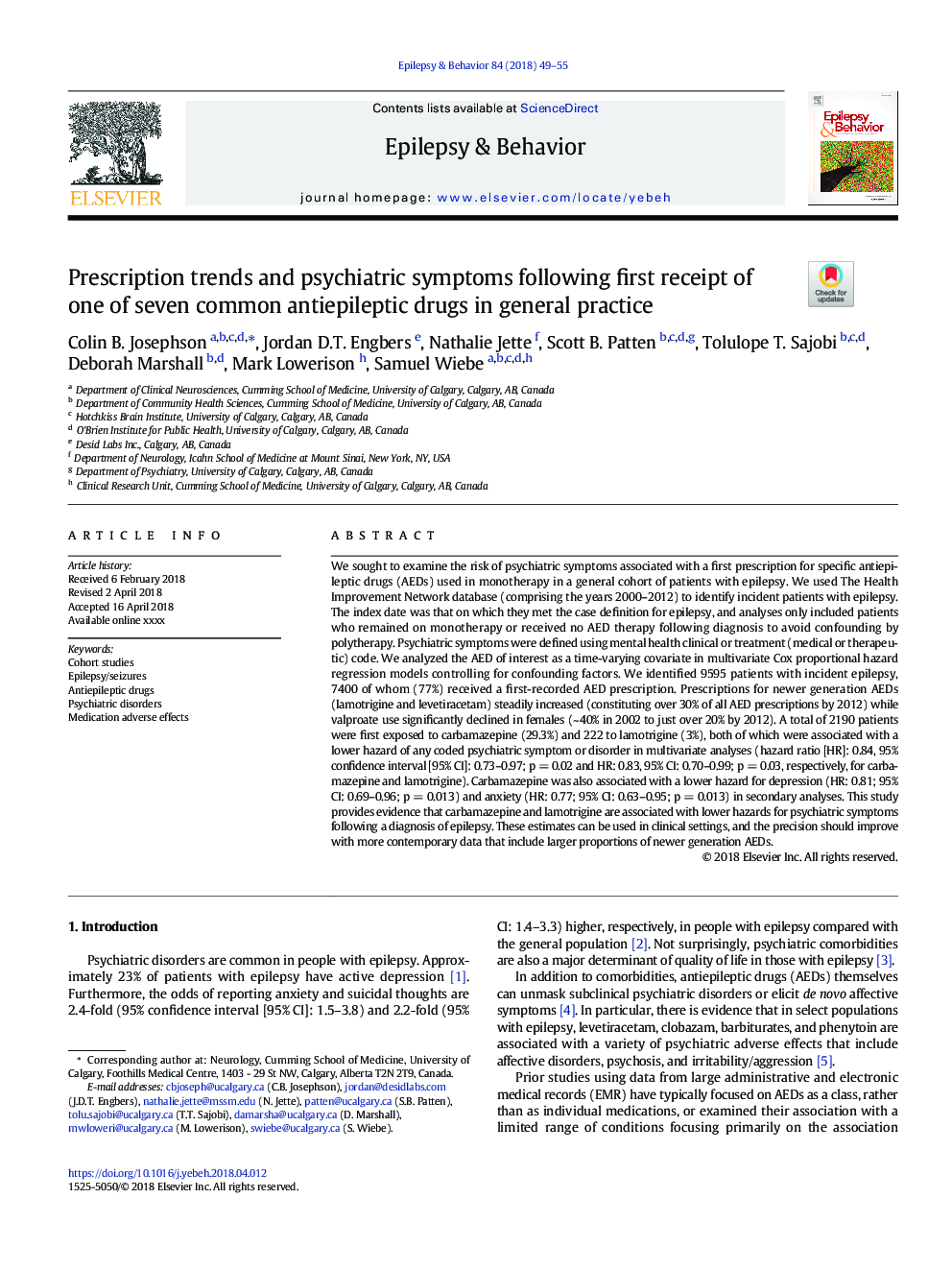| Article ID | Journal | Published Year | Pages | File Type |
|---|---|---|---|---|
| 8683542 | Epilepsy & Behavior | 2018 | 7 Pages |
Abstract
We sought to examine the risk of psychiatric symptoms associated with a first prescription for specific antiepileptic drugs (AEDs) used in monotherapy in a general cohort of patients with epilepsy. We used The Health Improvement Network database (comprising the years 2000-2012) to identify incident patients with epilepsy. The index date was that on which they met the case definition for epilepsy, and analyses only included patients who remained on monotherapy or received no AED therapy following diagnosis to avoid confounding by polytherapy. Psychiatric symptoms were defined using mental health clinical or treatment (medical or therapeutic) code. We analyzed the AED of interest as a time-varying covariate in multivariate Cox proportional hazard regression models controlling for confounding factors. We identified 9595 patients with incident epilepsy, 7400 of whom (77%) received a first-recorded AED prescription. Prescriptions for newer generation AEDs (lamotrigine and levetiracetam) steadily increased (constituting over 30% of all AED prescriptions by 2012) while valproate use significantly declined in females (~ 40% in 2002 to just over 20% by 2012). A total of 2190 patients were first exposed to carbamazepine (29.3%) and 222 to lamotrigine (3%), both of which were associated with a lower hazard of any coded psychiatric symptom or disorder in multivariate analyses (hazard ratio [HR]: 0.84, 95% confidence interval [95% CI]: 0.73-0.97; pâ¯=â¯0.02 and HR: 0.83, 95% CI: 0.70-0.99; pâ¯=â¯0.03, respectively, for carbamazepine and lamotrigine). Carbamazepine was also associated with a lower hazard for depression (HR: 0.81; 95% CI: 0.69-0.96; pâ¯=â¯0.013) and anxiety (HR: 0.77; 95% CI: 0.63-0.95; pâ¯=â¯0.013) in secondary analyses. This study provides evidence that carbamazepine and lamotrigine are associated with lower hazards for psychiatric symptoms following a diagnosis of epilepsy. These estimates can be used in clinical settings, and the precision should improve with more contemporary data that include larger proportions of newer generation AEDs.
Related Topics
Life Sciences
Neuroscience
Behavioral Neuroscience
Authors
Colin B. Josephson, Jordan D.T. Engbers, Nathalie Jette, Scott B. Patten, Tolulope T. Sajobi, Deborah Marshall, Mark Lowerison, Samuel Wiebe,
